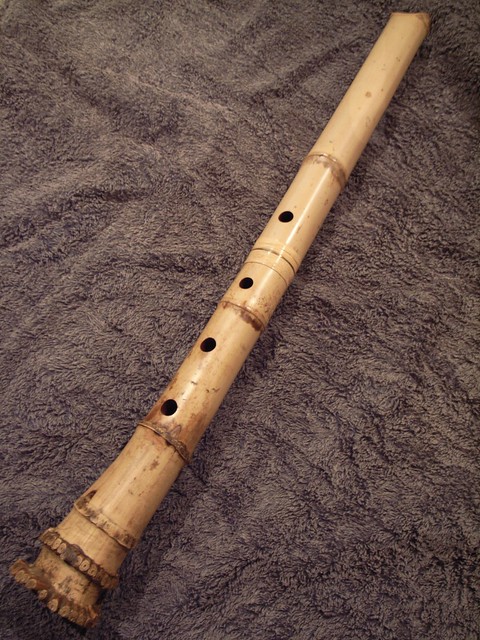By: Joseph Robles
Synopsis-
Shigin(詩吟) is a unique form of poetry recital created in Japan. Shigin was an interpretation of an earlier kind of poetry brought into Japan from China around the 5th century. Shigin as it is known today was developed at the end of the Edo Period, notably by members of the samurai class. However, at the time, poetry was seen as more upper class thus a great deal of poems that were sung were written by famous Japanese military and political figures such as Oda Nobunaga. Many emperors also composed poems that would eventually be sung. As a display of class, Shigin was performed to commemorate various special occasions, such as festivals, wedding ceremonies, etc. It was not restricted to such large occasions however, it could also performed in front of a small group in tatami tatami-floored room, or recited to oneself. During the past and at present, shigin performances were held throughout the year and can take place on a city, prefectural, and national level. Shigins were able to be performed as is, but would more commonly be performed alongside the Wagakki Instruments(Japanese Instruments), the Koto, and the Shakuhachi. On larger occasions, Kenshibu(剣詩舞) would be performed alongside Shigin, it is a traditional sword dance. This sword dance was most certainly the result of Shingin’s origins alongside the Samurai class. However, following WWII, swords were outlawed and fans were used as a replacement for these sword dances. 7 years later swords would no longer be outlawed, but the use of fans persisted nonetheless.
Below are two of the instruments that were typically played alongside Shigin.

Uploaded by: A Gude
Uploaded on: May 30, 2009, at 3:55:44 PM EDT
CC: CC BY-SA 2.0
Description: 16th century instrument. Usually a 13-stringed instrument. Viewed as a romantic instrument as well as a symbol of wealth. This version of the instrument was created between the Ashikaga period and the Azuchi-Momoyama period.

Uploaded by: Akihito Fujii
Uploaded on: June 28, 2010, at 11:23:20 AM EDT
CC: CC BY-SA 2.0
Description: 16th century instrument. Wind instrument. Historically used by Buddhist monks as a form of meditation. This version of the instrument was created between the Ashikaga period and the Azuchi-Momoyama period.
Below are two examples of Shigin performances
Description: This song is called “Kōdōkan”. A poem written by the feudal lord of Mito, Nariaki Tokugawa, during the Edo period. This was performed in front of the Nikko Toshogu Shinto shrine in Nikko, Japan. This kind of performance was more seen during celebrations.
Description: This performance is more in line with what politicians or military figures would historically do.
Today’s Interpretation of Shigin:
As you can see from the two examples provided above, as far as content and purpose, both past and present versions of Shigin fill the same role. While not as well known as other literature in Japan, Shigin has remained consistent. The once-declining community also continues to grow, even outside of Japan as Shigin schools emerge in most major nations.
Reflection:
I decided to choose Shigin as my topic of interest because of Wagakki band. I have always been interested in traditional Japanese music and found Wagakki band to be the closest thing to my tastes in music. It is amazing how this group combines traditional Japanese music with rock. I would like to add that researching this subject was quite difficult as there is not much formal research out there on Shigin. It is my sincere hope that someone more capable than myself will one day pick this up and delve in deeper than I could.
Bibliography:
Asai, Susan Miyo. “Transformations of Tradition: Three Generations of Japanese American Music Making.” The Musical Quarterly 79, no. 3 (1995): 429–53. http://www.jstor.org/stable/742437.
Bingham, Justin. “Shigin: A Truly Beautiful Art Form with a Rich History.” Japan Today, 24 May 2017, https://japantoday.com/shigin-a-trulxy-beautiful-art-form-with-a-rich-history
Fujii Akihito, 2010 Japanese Bamboo Flute “Shakuhachi”. Images, https://www.flickr.com/photos/afujii/4742739336.
Gude A, 2008. Koto. Images, https://www.flickr.com/photos/29625499@N04/3143260968